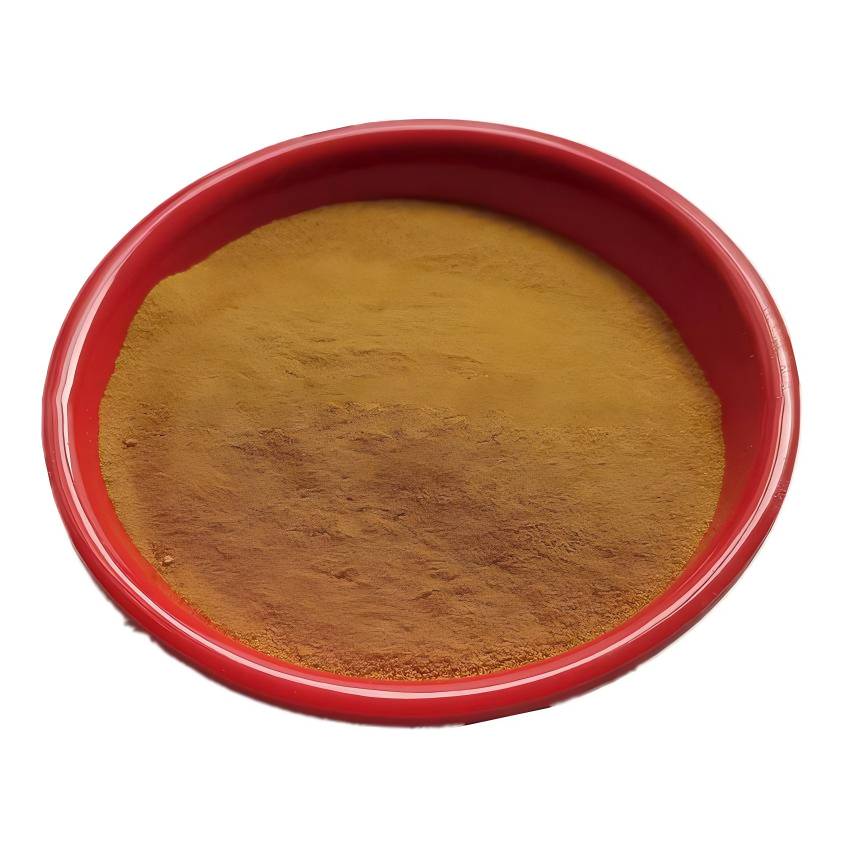Dandelion Food, What You Need to Know?
Dandelion, also known as yellow flower ground elder or white drum ding, is a perennial herb in the Asteraceae family with a long history of thousands of years. It is distributed in many countries and regions around the world, with about 2,000 species. 75 species have been studied, and they are still being discovered. Dandelions are mostly found in the north[1]. The whole body of the dandelion is edible. The root is thick and dark, usually one or more plants are born in the soil, with a short rhizome. The root has long leaves, and the leaves are flat. The countless flower stalks are the same length as the leaves and are hairy. The petals are tongue-shaped, yellow in color, and the central part of the outer tongue has a broad purplish red band. The flowering period is from April to May, and the fruiting period is from June to July [2].
Dandelion is an edible plant that can also be used to prevent and treat diseases. It has a slightly bitter taste, is considered cold in nature, is not toxic in itself, and all parts of the plant can be used in medicine. As a traditional Chinese medicine, it has pharmacological effects such as clearing away heat and toxins, clearing the liver and lungs, and inhibiting bacteria and inflammation. As a food, it is rich in dandelion steroids, inulin, inulicin, asparagine, pectin, choline, and legume steroids, among other substances that are beneficial to the human body[3]. In recent years, dandelion has received significant attention in medical treatment and food development due to its particularly rich pharmacological and nutritional value [4-5]. A review of the nutritional composition, active ingredients, biological activity and current research status of dandelion food will provide a theoretical reference for the in-depth development and utilization of dandelion.

1 Nutritional composition of dandelion
Dandelion is rich in fat, carbohydrates and protein, which are important for promoting growth and development, providing energy and boosting the immune system. It also contains a lot of crude fibre, which has a good regulating effect on the intestines and stomach, and can also lower blood sugar [6]. The protein and dietary fibre content is dozens of times higher than that of common vegetables such as tomatoes, Chinese cabbage, beans and spinach. Dandelion is high in vitamins and minerals such as calcium, iron and phosphorus, which help to maintain the stability of the body's internal environment and acid-base balance[7-8]. Selenium is a highly effective anti-cancer element among essential trace elements, and 100 g of dandelion contains 14.7 μg of selenium, which is much higher than other herbs.
2 Active ingredients in dandelion extract
flavonoids, polysaccharides, polyphenols and terpenoids are all active ingredients in dandelion extract, and have a variety of physiological activities, such as antibacterial, anti-inflammatory and antioxidant. The medicinal and edible value of dandelion is basically inseparable from its active ingredients [9].
2.1 Polysaccharides
Dandelion extracts are rich in polysaccharides. Polysaccharides refer to compounds composed of multiple identical or different monosaccharides. They are mainly found in animals, plants and microorganisms, including pectin, cellulose, etc., and play an important role in the growth and development of organisms. Dandelion polysaccharides include glucose, inulin, fructose, sucrose, and polysaccharides. They account for 30% to 50% of the dry weight of plants, and the polysaccharide content of dandelion roots is half of the dry weight, and inulin is 45% of the dry weight of the roots[10]. The molecular structure of polysaccharides contains many polar functional groups, which have a strong affinity for water molecules. Certain polysaccharides with a small molecular weight and low degree of branching have a certain solubility in aqueous solutions, and their solubility gradually increases with increasing temperature.
Chen et al. [11] extracted and purified acidic water-soluble polysaccharides from dandelion leaves at 120 °C using a high-pressure sterilizer, namely, a new dandelion leaf polysaccharide (DLP120). DLP120 is a complex polysaccharide composed of pectin and arabinogalactan, and is mainly composed of arabinose (32.35%) and galactose (44.91%). DLP120 inhibits the proliferation of HepG2 cells by inducing apoptosis, mainly blocking the cell cycle at the S phase, and has the potential to be used as an anti-cancer drug. Zhang Jing et al. [12] used hot water extraction to obtain dandelion root polysaccharides from dandelion root, and conducted single factor experiments and orthogonal experiments to determine the optimal extraction conditions for dandelion root polysaccharides, which were a liquid-to-material ratio of 1:40 (g/mL), an extraction temperature of 80 °C, an extraction time of 3 h, and 2 extraction times. Under these extraction conditions, the polysaccharide yield was 8.945%.
2.2 Phenolic acids
Dandelion extract contains a large number of phenolic acids. Chlorogenic acid, caffeic acid, phenylacetic acid, tartaric acid, oxalic acid, p-coumaric acid, gallic acid, phenylacetic acid, etc. have been isolated from dandelion [10]. Among them, chlorogenic acid and caffeic acid have a significant inhibitory effect on bacteria. The two organic acids chicoric acid and monocaffeoyl tartaric acid, which are derivatives of caffeic acid, have the effects of lowering blood sugar and blood lipids, as well as antibacterial, antiviral and adjuvant therapeutic effects against colds [13]. Shen Qi et al. [14] used ethanol as an extractant, the entire dandelion as the raw material, and an orthogonal test method to determine that at a material ratio of 1:16, a temperature of 60 °C, a time of 2 h, and an 80% ethanol volume fraction, the extraction rate of chlorogenic acid from dandelion can reach more than 60%.
2.3 Terpenoids
Terpenes are a general term for polymers containing all isoprene and its derivatives. In dandelion, the main terpenoids are triterpenoids and sesquiterpenoids. The triterpenoids mainly include pseudopappadienyl palmitate, pseudopappadienyl, 3-acetylpseudopappadienyl, dandelion sterol ethyl ester, and lupenyl acetate [15]. Dandelion contains a pentacyclic triterpenoid called terpinenol. It has pharmacological effects such as anti-inflammatory, hypoglycemic, heat-clearing and detoxifying, anti-oxidant, and anti-cancer. It can also inhibit the glycolysis level and hexokinase activity of lung cancer cells by regulating the Akt pathway [16-17]. Dandelion sesquiterpenoids mainly include taraxerol, isopimarene A and mongolicin B. The sweet and bitter taste of the plant is caused by sesquiterpenoids [15, 18].
2.4 Flavonoids
Flavonoids are ubiquitous in nature and are a natural product. Common flavonoids include flavones, flavonols, dihydroflavonoids, and orange ketones. More than 40 flavonoids have been identified in dandelions. As functional ingredients, flavonoids also have antioxidant, antitumor, and anti-aging effects [19]. Dandelion flavonol extract can inhibit the proliferation of human esophageal squamous cell carcinoma cells, and by inhibiting epithelial mesenchymal transition, it can further inhibit the cell migration and invasion of human esophageal squamous cell carcinoma cells [20]. Dandelion flavonoids fermented by probiotics have stronger DPPH free radical scavenging ability and reducing power than those that have not been fermented, and can significantly inhibit the activity of Staphylococcus aureus and Salmonella [21].
3 Biological activity of dandelion
3.1 Antibacterial activity
Previous studies have demonstrated that dandelion has bacteriostatic properties. Dandelion has a good killing effect on Staphylococcus saprophyticus and Staphylococcus aureus, as well as on Salmonella typhi, Neisseria meningitidis, Proteus mirabilis, Pseudomonas aeruginosa, Corynebacterium diphtheriae, Shigella dysenteriae, and Streptococcus pneumoniae [22]. Dandelion contains ferulic acid, which can inhibit the aggregation of neutrophil leukocytes and has a certain inhibitory effect on viruses and bacteria. Li Yunxiang et al. [23] found in a previous study using the paper disc method that the fat-soluble substances in dandelion have a good inhibitory effect on Salmonella. It is initially believed that its antibacterial effect may be related to the destruction of the cell membrane structure of the bacteria.
The final results showed that dandelion phytic acid can inhibit the growth of Salmonella, and its important mechanism is to destroy the cell membrane of the bacteria. Zhang Weihua et al. [24] used Clostridium perfringens, Bacteroides fragilis and Bacillus cereus as research objects, and used a combination of traditional methods and matrix-assisted laser desorption/ionization time-of-flight mass spectrometry (MALDI-TOF) to detect protein expression in bacteria. The study found that dandelion solution has a strong inhibitory and bactericidal effect on it, and the inhibitory and bactericidal concentrations of dandelion solution on various bacteria were determined: the minimum inhibitory concentration (MIC) against Clostridium perfringens was 0.06 g/mL, and the minimum bactericidal concentration (MBC) was 0.25 g/mL. The MIC and MBC for Bacteroides fragilis were 0.03 g/mL and 0.125 g/mL, respectively, and the MIC for Bacillus cereus was 0.125 g/mL and the MBC was 0.5 g/mL.
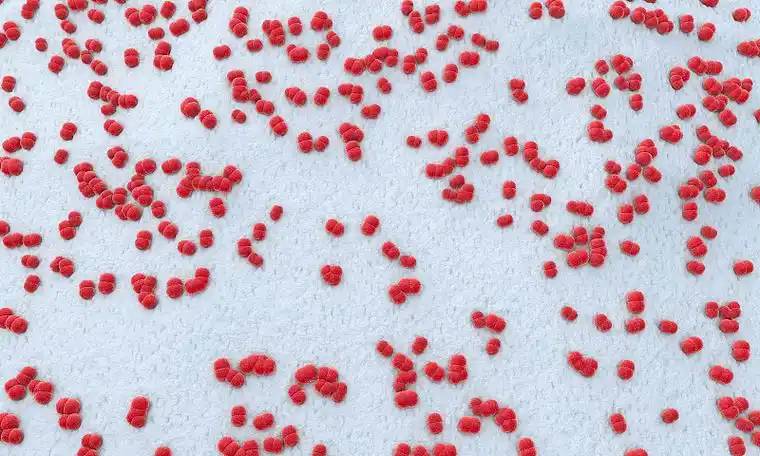
3.2 Anti-inflammatory properties
Inflammation, also known as inflammation, is a defense mechanism of the human body against external or internal stimuli. It is a self-defense response of the human body, mainly manifested as local skin or organ pain, redness, swelling, high skin temperature, congestion, and dysfunction of some organs. Inflammation is generally caused by infections such as bacteria, viruses, chlamydia, mycoplasma, etc., and may also be caused by non-infectious causes. It can cause serious harm to the human body and lead to damage to the body's own tissues. Dandelion plants contain a variety of active ingredients such as taraxerol, which have the effects of reducing swelling and knots, clearing away heat and toxins, dredging the meridians, and promoting the functional activities of the internal organs. They can also play an anti-inflammatory and analgesic role, clear heat and moisten the stomach, and protect the gastrointestinal tract in patients with various types of stomach pain[25].
Ma Yanni et al.[26] found that based on the alcohol extraction of dandelion roots, the separation and activity evaluation of the highly effective antibacterial and anti-inflammatory active components of dandelion root were carried out using a macroporous adsorption resin column, and an adsorption extraction separation process was constructed: after reflux extraction with 70% ethanol, column separation was carried out using D101 macroporous adsorption resin, and the 70% ethanol eluate after water elution was the antibacterial and anti-inflammatory active component of dandelion root. This component has a significant inhibitory and bactericidal effect on nine common human, livestock and poultry pathogens.
3.3 Antioxidant properties
Studies have shown that oxidative stress associated with chronic diseases, age and other factors can cause inflammatory reactions. The flavonoids, polysaccharides and phenolic substances in dandelion have a strong scavenging ability for free radicals and have a good antioxidant effect. Pan Mingyue et al. [27] used high performance liquid chromatography (HPLC) to study the composition and mechanism of action of the antioxidant components in dandelion. They used various online databases to identify common antioxidant targets in dandelion and construct a protein interaction network (PPI), and then performed enrichment analysis of gene ontology (GO) and Kyoto Encyclopedia of Genes and Genomes (KEGG) signal pathways. The results showed that all phases of dandelion extracts have different degrees of antioxidant effects, and the ethyl acetate phase extract has the best antioxidant effect among the ethyl acetate, dichloromethane, petroleum ether, and n-butanol phases. Jedrejek et al. [28] showed that four phenolic components in dandelion leaves and flowers can significantly inhibit plasma lipid peroxidation induced by H2O2 or H2O2/Fe.
3.4 Antitumor
The main mechanism of dandelion's antitumor action is to interfere with cell signal transduction, control apoptosis-related proteins, inhibit tumor cell proliferation and induce their death, inhibit tumor cell migration, and inhibit neovascularization [29]. Research on its anticancer effect focuses on its active ingredients, such as organic acids, flavonoids, sterols, triterpenes, polysaccharides, etc.
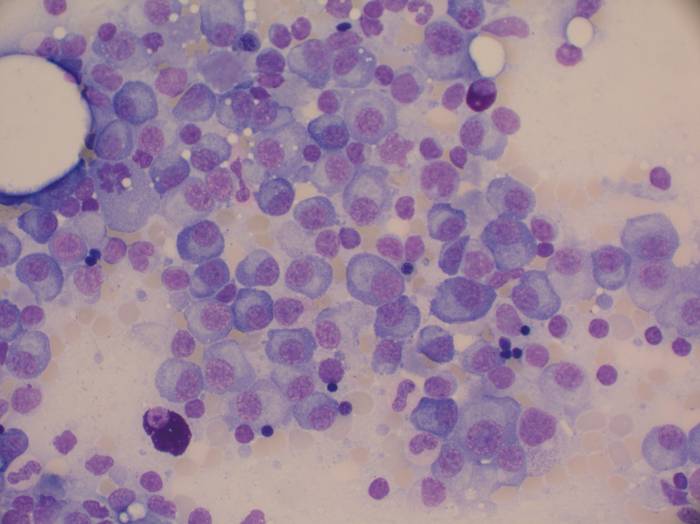
The polysaccharides contained in dandelion can enhance the immunity of peripheral blood cells, change the living environment of cancer cells, and thus slow down their growth. In addition, these polysaccharides can inhibit nuclear mutations and accelerate the induction of apoptosis in cancer cells. The flavonoids in dandelion can change the permeability of cell membranes, thereby disrupting their integrity. The exudation of some metal ions, proteins and carbohydrates can lead to metabolic disorders in the cells, which in turn leads to cell death. This property can kill cancer cells.
In dandelions, the phenolic acids contained can inhibit the cell cycle and hinder the cell differentiation process, thereby affecting the proliferation and differentiation of cancer cells. In addition, the phenolic acids in dandelions are also a good scavenger of oxygen free radicals, which can reduce the damaging effects of oxygen free radicals on healthy cells [30].
4 Current status of dandelion food research
Because dandelion is a medicinal food, dandelion foods such as functional drinks, biscuits, and tea have appeared on the market. Some regions also use dandelion as a wild vegetable in bibimbap or make it into pickles. Overseas, large-scale cultivation of dandelion for food development has also begun. The processing technology for dandelion in China is not yet mature, and there is much room for development.
4.1 Dandelion drinks
4.1.1 Dandelion tea
Traditional Chinese tea-making techniques do not require any additives and can be completed simply by stir-frying. The water-soluble functional ingredients in dandelion can be fully dissolved and released during the preparation process, which not only provides health benefits but also retains its unique fragrance. While satisfying the public's tea-drinking needs, it also has the health benefits of clearing heat and relieving summer heat, anti-inflammatory and liver-benefiting [31].
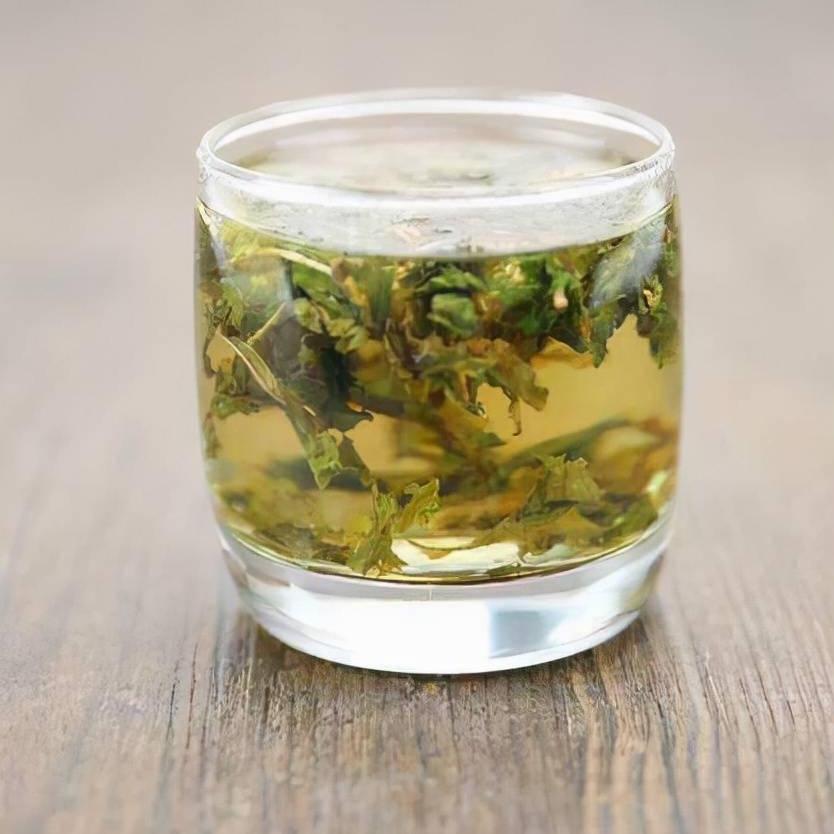
4.1.2 Dandelion yogurt
Dandelion added to yogurt can improve the taste and flavor of yogurt and increase its nutritional value. Dandelion juice can also be added to fresh milk to combine the ability of yogurt to reduce metal ions and its antioxidant properties with the antioxidant function of dandelion, thereby improving the antioxidant capacity of the food and better exerting its health-promoting function. Zhao Jianying et al. [32] used a response surface method to optimize the production process using dandelion juice, white sugar and grapefruit juice as the main additives. The optimal production process was found to be 20 g of grapefruit juice, 8 g of dandelion juice and 7 g of white sugar, giving it a unique flavour and certain nutritional value.
4.1.3 Dandelion functional drinks
Dandelion contains many active substances that are beneficial to the human body and has very good health benefits. The chlorogenic acid contained in dandelion can clear away heat and detoxify, resist oxidation, and improve intestinal health. Using it as a monitoring indicator can increase the taste of the beverage while also providing health benefits. Yin Jiale et al. [33] determined and optimized the composition of a health-enhancing compound beverage by experimenting with 100% water as the standard and adding 60% dandelion extract, 20% ginseng extract, 11% xylitol and 0.09% citric acid. The health-enhancing compound beverage produced by this process has a significant anti-fatigue effect and a unique taste. Kim et al. [34] used the high nutritional value of dandelion to develop a dandelion probiotic functional beverage with enhanced physiological and chemical properties.
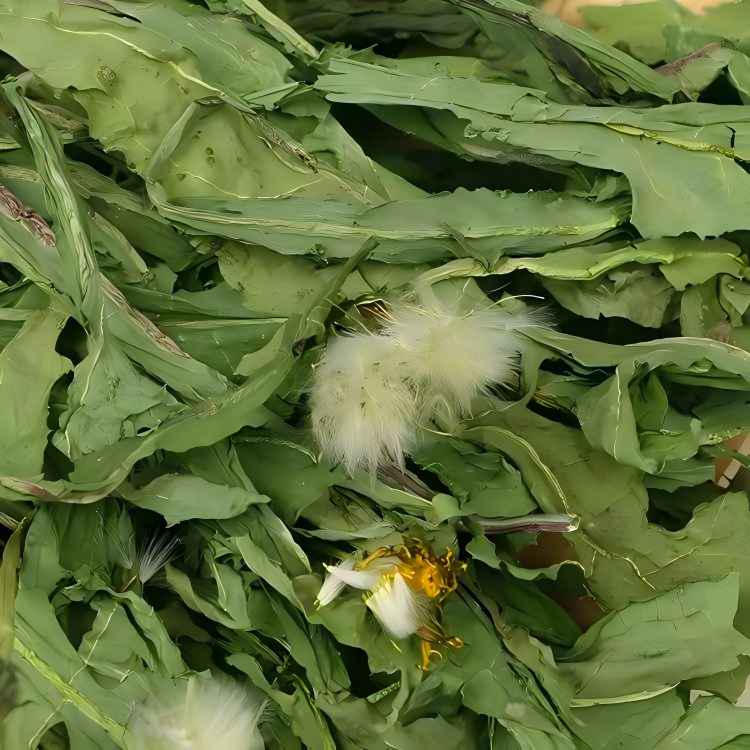
4.1.4 Dandelion coffee
Because coffee contains caffeine, it can cause problems such as hyperthyroidism and rapid heart rate. People who eat a lot of oil for a long time can drink dandelion coffee, which helps the liver, gallbladder and pancreas metabolize excess fat, thereby reducing the occurrence of pancreatic and other diseases. Roasted dandelion roots have a natural honey fragrance and have a refreshing effect [35].
4.2 Dandelion grain products
4.2.1 Steamed buns
Zhang Lingwen et al. [36] studied the effects of pH, kneading time, kneading frequency, proofing time and dandelion addition on the nutritional value and quality of dandelion buns made using a single-fermentation process. The results showed that the quality of the fermented buns was better when 20 g of dandelion extract was used as the raw material and 1 kg of flour was used as the raw material.
4.2.2 Cookies
Adding dandelion to the processing of traditional pastry products can enhance their nutritional value. A good recipe for dandelion biscuits is 2 g dandelion powder, 14 g butter, 13 g milk, 4 g condensed milk, 4 g white sugar, and 30 g low-gluten flour. The biscuits are not only suitable for all ages, but also have a balanced nutritional value. The ingredients are cheap and easy to obtain, and the recipe is simple to follow. This product can fill a gap in China's dandelion health food sector and therefore has good development prospects [37].
4.2.3 Dandelion bread
Wang Yanping et al. [38] added dandelion powder, which is high in nutritional value, to flour and fermented it to make a specialty bread with the health benefits of dandelions. The optimal recipe (based on 100% bread flour addition) is 3.0% dandelion powder, 1.0% salt, 12.5% eggs, 1.0% yeast, milk powder 6.0%, improver 0.6%, butter 8.0%.
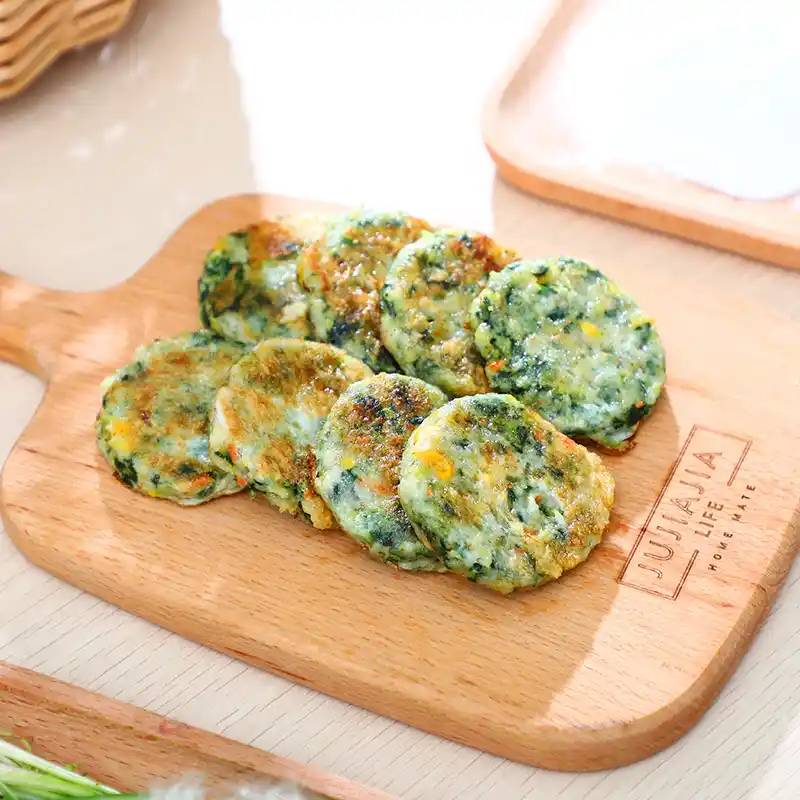
4.3 Dandelion pickles
Pickles are a condiment with a unique flavour. The production of pickled vegetables is a simple process that does not require complicated equipment, and can be done in every household. Liu Chenggang [39] used single-factor and orthogonal experiments to determine the optimal recipe for dandelion pickles: 6.0% edible blended oil, 5.0% shredded ginger, 2.5% monosodium glutamate, 2.5% salt, 3.5% light soy sauce, 3.0% red pepper, 4.5% garlic, some peanuts, a little star anise, cumin and black sesame. At this time, the dandelion pickles have a unique flavor and a mellow taste.
4.4 Dandelion tofu
Chi Xiaojun et al. [40] developed the best tofu recipe containing dandelion using single-factor and orthogonal experiments: a mass ratio of 3:2 for black beans and soybeans, a mass ratio of 3:1 for soy milk and dandelion, and a mass ratio of 1:2 for water added during the ripening process. The tofu developed using this recipe is white, has no bean residue, and has a fresh taste and delicate texture.
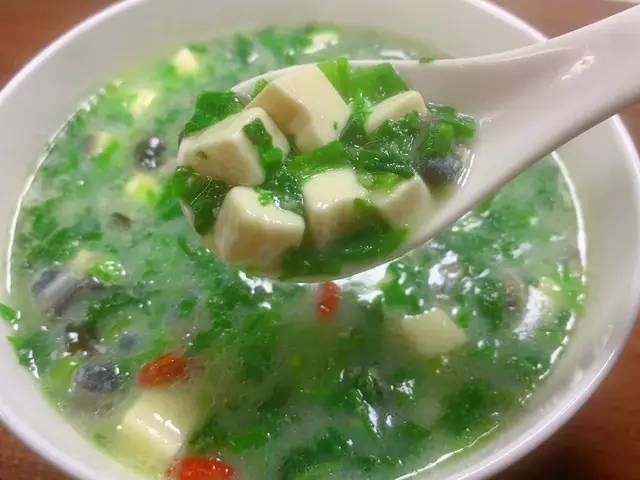
5 Conclusion
Dandelion is a medicinal plant with high nutritional value. The polysaccharides it contains play an important role in biological growth and development. Phenolic acids, flavonoids and terpenes have antioxidant, anti-aging, anticancer and anti-inflammatory effects. Dandelion cultivation is gradually expanding, and a large amount of research has been carried out on its active ingredients at home and abroad. Modern deep processing technology can be fully utilized to produce medicines, foods, and health products with dandelion active substances as the main ingredient, so as to promote the in-depth development of related industries. Health foods made from dandelion extract are now mostly in the form of drinks and biscuits. Therefore, there is broad prospects for the development of dandelion health foods.
References:
[1] Qiao Yonggang, Wang Yongfei, Cao Yaping, et al. Karyotype similarity and cluster analysis of 13 species of Taraxacum using the Jaccard coefficient[J]. Journal of Grassland Science, 2020, 28(1): 285-290.
[2] Zou Renjun. Morphological identification of dandelions and their cultivation techniques for high yields[J]. Plant Doctor, 2016, 29(6): 50-52.
[3] Hou Rongrong, Du Fengtao, Zou Xingyue, et al. Research progress on active substances in dandelion and their applications [J]. Anhui Agricultural Science Bulletin, 2019, 25(22): 27-28, 53.
[4] Chen Mengni, Wang Hui, Li Yongshan, et al. Research progress on the cultivation technology and application of dandelion, which is used as medicine and food [J]. Shanxi Agricultural Sciences, 2020, 48(12): 2007- 2011.
[5] Yi Sirong, Huang Ya. Research overview of Taraxacum plants [J]. Shizhen National Medicine, 2002(2): 108-111.
[6] Zhang Luying. The practical value and new product development of dandelion [J]. Food Safety Herald, 2017(12): 139-140.
[7] Cheng Liying, Shen Jijian, Hu Xiyang, et al. The nutritional and health value of dandelion and its current development and utilization in food [J]. Food Industry, 2022, 43(8): 331- 334.
[8] Wen Wen, Wang Li, Liu Yangyang, et al. Exploration of the nutritional and health functions of dandelion and its potential commercial value [J]. Economic Research Guide, 2017, 340(26): 138-139.
[9] Jiang Xinmei, Zhang Xue, Cheng Yao, et al. Effect of light intensity on the growth, accumulation of active ingredients and antioxidant activity of dandelion [J]. Journal of Northeast Agricultural University, 2023, 54(3): 26-34.
[10] Zou S H. Research progress on bioactive substances in dandelion [J]. Heilongjiang Agricultural Science, 2019(8): 186-189.
[11] CHEN P, DING S Y, YAN Z Q, et al. Structural characteristic and in-vitro anticancer activities of dandelion leaf polysaccharides from pressurized hot water extraction[J]. Nutrients, 2022, 15(80): 80.
[12] Zhang Jing, Wen Nuan, Liu Yangyang, et al. Dandelion root polysaccharide extraction and development of dandelion polysaccharide beverage [J]. Agricultural Products Processing, 2018(1): 13-17.
[13] Zhang Xiaodong, Sun Liya, Meng Ran, et al. Extraction and in vitro functional activity analysis of phenolic acids in 22 dandelion resources [J]. Jiangsu Agricultural Sciences, 2021, 49(19): 190-196.
[14] Shen Qi, Jin Chunyan, Zhang Weiming, et al. Study on the effect of dandelion chlorogenic acid and its complex on grape preservation [J]. Food Science, 2007(6): 332-335.
[15] Chen Ruijun, Wang Qiuyuan, La Xiaojin, et al. Research progress on the medicinal use of dandelion [J]. Modern Journal of Integrated Traditional Chinese and Western Medicine, 2021, 30(5): 563-567.
[16] Zhao Yang, Liu Na, Wang Yuan, et al. Research progress on the active ingredients of dandelion and their application in animal production [J]. Feed Research, 2021, 44(1): 113-116.
[17] LIU D, ZHAO P, WANG L, et al. Effects of taraxerol on proliferation and glycolysis of lung cancer cells [J]. Journal of Clinical and Pathological Sciences, 2018, 38(3): 465-471.
[18] BROCKHOFF A, BEHRENS M, MASSAROTTI A, et al. Broad Tuning of the human bitter taste receptor hTAS2R46 to various sesquiterpene lactones, clerodane and labdane diterpenoids, strychnine, and denatonium[J]. J Agric Food Chem, 2007, 55(15): 6236-6243.
[19] Zhang Lianghua, Yi Jianping. A review of the extraction and bioactivity of functional components of dandelion [J]. Food Safety Guide, 2019, 243(18): 155-156.
[20] Sang Lisheng, Wu Jie, Cao Yajie, et al. Effects of dandelion flavonol extract on proliferation and invasion of esophageal squamous cell carcinoma cells [J]. Food Industry Science and Technology, 2020, 41(12): 291-295, 301.
[21] Fu J. Study on the effects of probiotic fermentation on the content, composition, antioxidant and antibacterial activities of dandelion flavonoids [D]. Hohhot: Inner Mongolia Agricultural University, 2019.
[22] Xue Yanzhao, Chang Meiling, Zhen Lijun, et al. Research progress on dandelion [J]. China Modern Distance Education in Traditional Chinese Medicine, 2011, 9(22): 60-61.
[23] Li Yunxiang, Liang Yinku, Gao Feixiong, et al. Mechanism of the bacteriostatic effect of the fat-soluble components of dandelion on Salmonella [J]. Food Industry Science and Technology, 2019, 40(4): 125- 128, 145.
[24] Zhang Weihua, Wang Cui, Dou Jianwei, et al. Study on the antibacterial effect of dandelion water extract on common clinically harmful intestinal bacteria in vitro [J]. Medical Information, 2023, 36(5): 74-80.
[25] Duan Huichun, Pu Huayun. Research progress on the protective effect of dandelion saponins on gastric epithelial cells and anti-inflammatory effect [J]. Contemporary Chinese Medicine, 2022, 29(20): 30-34.
[26] Ma Yanni, Wei Yue, Li Zhining, et al. In vitro antibacterial and anti-inflammatory effects of active components in dandelion root [J]. Food and Fermentation Industry, 2022, 48(1): 98-103.
[27] PAN Ming-yue, LI Tao, CHEN Wan-yu, et al. Research on the antioxidant active ingredients and mechanism of dandelion based on HPLC method and network pharmacology [J]. Journal of Jilin University (Natural Science Edition), 2023, 61(2): 437-442.
[28] JEDREJEK D, KONTEK B, LIS B, et al. Evaluation of antioxidant activity of phenolic fractions from the leaves and petals of dandelion human plasma treated with H2O2 and H2O2/Fe[J]. Chem Biol Interact, 2017, 262(1): 29-37.
[29] He Yurou, Huang Yudi, Lin Peiwei, et al. Research progress on the anti-tumor effect of dandelion [J]. Oncology Pharmacy, 2019, 9(3): 370-374.
[30] Hu Yonghua. Research on the anti-cancer mechanism of dandelion [J]. Western Traditional Chinese Medicine, 2018, 31(1): 132-134.
[31] Li Fang, Xie Guangfan, Yang Fan. Research progress on the application of dandelion in food [J]. China Food Industry, 2022, 356(18): 84-87.
[32] Zhao Jianying, Bai Jian. Response surface method for optimizing the process of dandelion and grapefruit yogurt [J]. Food Research and Development, 2021, 42(18): 123-129.
[33] YIN Jiale, CHEN Yue, ZHANG Haiyue. Development of a dandelion-ginseng compound health drink and its anti-fatigue function [J]. Food Science and Technology, 2020, 45(11): 82-89.
[34] KIM J H, BAIK S H. Preparation and characterization of fermented dandelion (Taraxacum officinale) beverage using Lactobacillus F46 having cinnamoyl esterase activity[J]. Food Science and Biotechnology, 2015, 24(2): 583-593.
[35] Lv Chuanbin. Dandelion coffee refreshes and protects the liver [J]. Modern Health Care (First Half Month Edition), 2021, 21(2): 7.
[36] Zhang Lingwen, Sun Kexiang, Ji Hongfang. Research on the production process of dandelion health bread [J]. Processing of Agricultural Products, 2009(6): 71-74.
[37] Ma Jingxi, Yin Xinsong, Wu Shuqing. Development of dandelion biscuit [J]. Food Research and Development, 2019, 40(4): 77-81.
[38] Wang Yanping, Cao Fahao, Chen Haixia. Development and nutritional composition determination of dandelion nutrition bread [J]. Food Research and Development, 2013, 34(15): 86-88.
[39] Liu Chenggang. Dandelion pickle production process [J]. Grain Processing, 2022, 47(5): 52-54.
[40] Chi Xiaojun, Guo Yuqing, Liu Hui, et al. Process optimization and application research of dandelion tofu [J]. Food Research and Development, 2021, 42(2): 103-108.


 English
English French
French Spanish
Spanish Russian
Russian Korean
Korean Japanese
Japanese